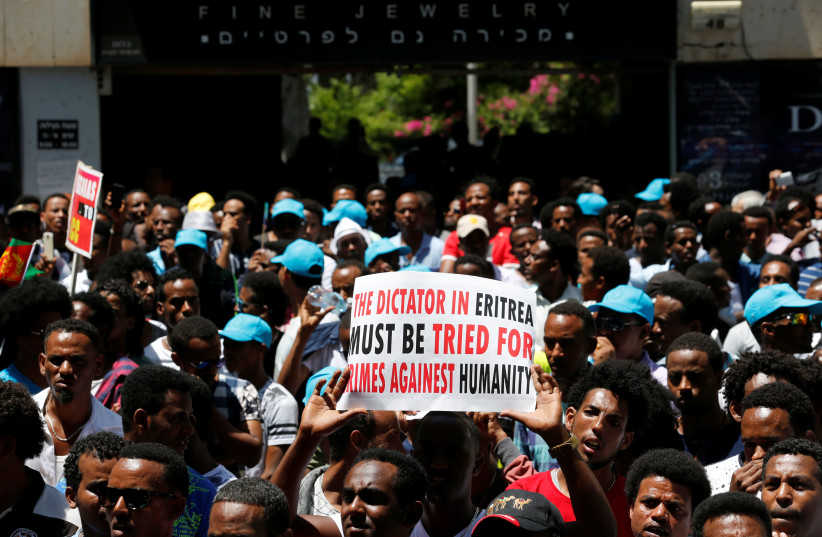By the end of 2022, the number of people displaced from their homes due to war, persecution, violence and human rights violations reached a record high of 108.4 million, according to the annual report of the UN High Commissioner for Refugees.
The reasons for this increase include the war in Ukraine and the ongoing conflict in Sudan.
According to Israel's Population and Immigration Authority, there are currently about 25,500 asylum seekers living in Israel, mainly from Eritrea and Sudan.
As of today, there is information about approximately 30 Eritrean citizens and only one Sudanese citizen who have been recognized as refugees in Israel. This is in stark contrast to Europe, where the recognition rate of Eritrean refugees stands at 81%.
While no women have been recognized as refugees in Israel in 2022, in November of that year, the office of then-interior minister Ayelet Shaked issued a statement to the press about her decision to reject the asylum request of an Eritrean citizen, Saira Leon, who feared genital mutilation if forced to return to her country.
The Advisory Committee on Refugees recommended recognizing the woman as a refugee, but Shaked dismissed the recommendation and made a controversial decision that equated female genital mutilation to Jewish circumcision.

The recognition rate of refugees in Israel (from all countries worldwide) stands at less than half a percent, with only 0.06% of the requests accepted over the years.
Since the outbreak of the war in Ukraine in February 2022, around 138,000 migrants who were not eligible for the Law of Return from Ukraine, Russia and Belarus, have entered Israel, of which less than a third are Ukrainian citizens who are entitled to protection.
Russia submitted the highest number of asylum requests in Israel during 2022, with its citizens submitting 1,012 requests. Belarus follows with 319 requests for asylum.
Israel's Hotline for Refugees and Migrants hosts World Refugee Day event
Israel's Hotline for Refugees and Migrants, a leading organization protecting the rights of refugees, is expected to host a free event in Tel Aviv on June 16 in honor of International Refugee Day.
The celebration, organized by the Center for the Advancement of African Refugees (ARDC), Elifelet, the Center for Refugees and Immigrants and the United Nations High Commissioner for Refugees, will take place at Dizengoff Center. It is slated to include an exhibition of paintings and photographs by asylum-seeking artists Salam Mamosh, Naka Pitiya, Tsagai Barha and Davit Yergao.
Additional work of refugee women will be displayed, including that of the fashion designer Lily Klopa, an asylum seeker from the Congo, and authors Moran Macmell, Nir Senens and Saleh Abu Musa.
